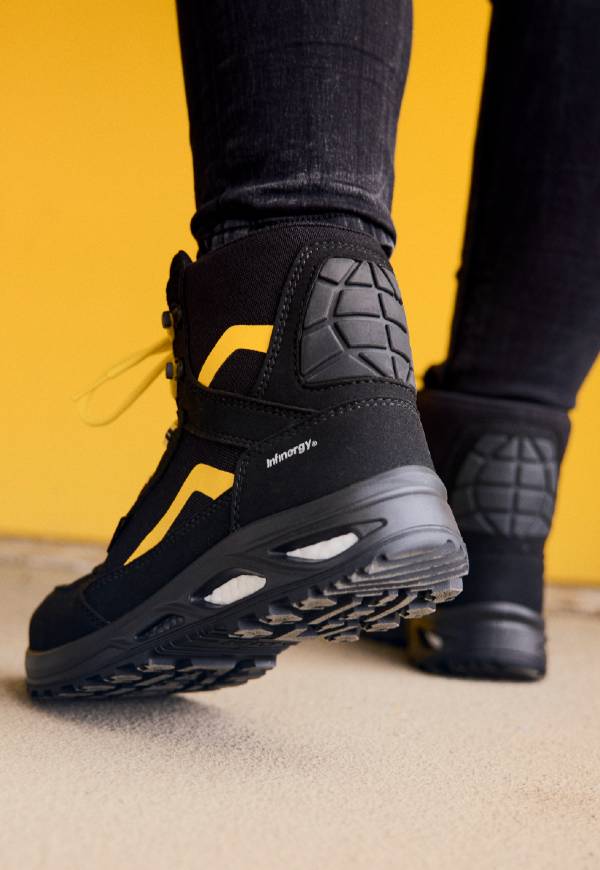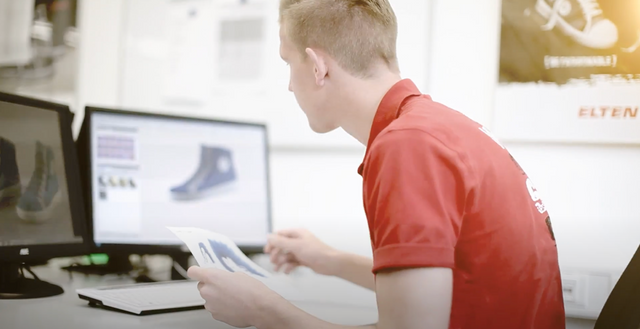Work Boot Safety - Australian Footwear Standards Explained
All of our safety boots & work shoes are compliant & certified with the relevant international safety standard DIN EN ISO 20344:2013 / DIN EN ISO 20345:2012.
While functionality, durability, style and comfort are all characteristics of our outstanding safety footwear, the paramount feature and fundamental requirement of what we deliver every day to our clients is safety.
In a world of globalised manufacturing, the process chain of material, components and assembly is required to be transparent and fully compliant to local and international industry standards. All PPE (Personal Protective Equipment) in our portfolio is tested on a regular basis and is compliant with the applicable standards.
Our claim for safety expands beyond the 200 Joules of (toe-cap) impact resistance as required by the Australian Standard. A penetration-resistant mid-sole, ergo foot bedding, electrostatic discharge, super light materials, metal and leather free models, and slip/fuel/oil resistant soles and upper are just a few of the additional features to ensure the highest level of protection and safety at the workplace.
Watch this short clip and see how ELTEN footwear are tested for safety.
SAFETY - Nothing Is More Important To Us
Footwear that conforms to AS/NZS 2210.3 (ISO 20344:2011, MOD) must be fitted with safety toecaps as a basic requirement. Safety toecaps at this standard meet the requirements of impact resistance at an energy level of 200 Joules and the requirements of compression resistance at a compression load of 15kN. Footwear conforming to these standards should be selected where there is a risk of injury to toes from objects falling or striking the feet.
Impact resistance is tested when a steel striker with a mass of 20kg is adapted to fall freely from a height of a metre and strike the safety toecap. A clay cylinder is placed under the cap and the clearance is measured after the test.
Compression equipment is used to test the resistance of a toecap by subjecting the toecap to a load of 15kN. As per the impact resistance test, a clay cylinder is placed under the toecap and the clearance is measured.
The AS/NZS 2210.5 (ISO 20344:2011, MOD)Standard is commonly referred to as the Occupational Footwear Standard and can meet all the other criteria of Safety Footwear with the exception that there is no safety or protective toecaps incorporated into the shoe.
Common areas of testing to ensure compliance with the footwear standard
+ Slip resistance of soles - The shoes must pass a minimum resistance test on both steel and tiled surfaces
+ Testing of specific ergonomic features - The footwear is put through a variety of testing including walking, kneeling and crouching, climbing stairs and more. Suitability is then recorded
+ Upper and lining materials testing - Includes a recording of the thickness, tear strength, flexing, pH value, chromium V1 content and abrasion resistance of the shoe
+ The outsole of the shoe is tested on its tear strength, abrasion resistance, flexing resistance, hydrolysis and resistance to fuel oil
Safety footwear classes and features
Basic shoe with Toe Protection Cap
PLUS:
+ Closed heel area
+ Antistatic
+ Heel energy absorption
+ Fuel resistant
Same Features as S1 standard
PLUS:
+ Penetration resistant midsole
Same Features as S1 standard
PLUS:
+ Water penetration and absorption resistant
Same Features as S1 standard
PLUS:
+ Water penetration and absorption resistant
+ Penetration resistant midsole
+ Corrugated sole


